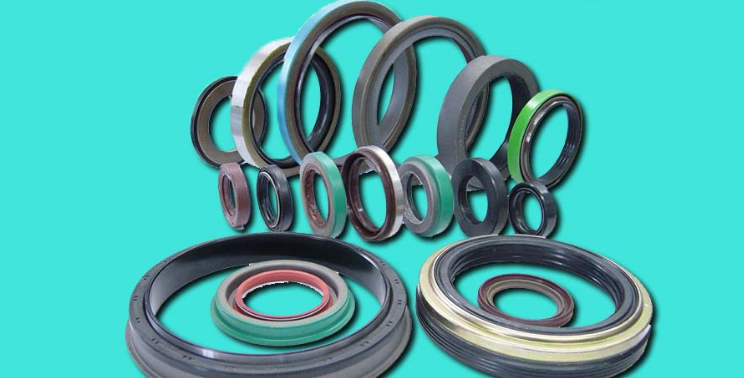Seals come in various types, each designed for specific applications based on factors such as pressure, temperature, media, and motion. Here's a comprehensive guide to different types of seals commonly used in industrial applications:
-
O-Rings:
- Shape: Circular cross-section.
- Material: Typically rubber (e.g., nitrile, silicone, Viton) or other elastomers.
- Application: General sealing applications, hydraulic systems, pneumatic systems.
-
Lip Seals (Radial Shaft Seals):
- Shape: Lip-shaped with a flexible lip.
- Material: Rubber or elastomeric materials.
- Application: Sealing rotating shafts, preventing lubricant leakage in gearboxes and other rotating equipment.
-
Mechanical Seals:
- Structure: Consists of rotating and stationary components.
- Material: Carbon, ceramic, tungsten carbide, and various elastomers.
- Application: Pumps, compressors, mixers, and other dynamic equipment handling fluids.
-
Gaskets:
- Shape: Flat or profiled.
- Material: Various materials, including rubber, cork, paper, metal, and composite materials.
- Application: Static sealing between two flat surfaces, commonly used in flanges, valves, and pipelines.
-
Diaphragms:
- Structure: Flexible membrane.
- Material: Rubber, elastomers, or synthetic materials.
- Application: Used to separate different mediums or to actuate control valves.
-
V-Rings (V-Seals):
- Shape: Cross-sectional V-shaped.
- Material: Rubber or elastomers.
- Application: Sealing rotating shafts in dynamic applications, providing effective exclusion of dirt and contaminants.
-
Bellows Seals:
- Structure: Flexible accordion-like component.
- Material: Metal or elastomers.
- Application: Compensating for axial, angular, and lateral shaft movement, often used in valves and pumps.
-
Rotary Seals (Oil Seals):
- Shape: Circular with a lip.
- Material: Rubber or elastomers.
- Application: Sealing rotating shafts in oil-lubricated systems, preventing oil leakage.
-
Piston Seals:
- Shape: Designed for piston applications.
- Material: Rubber or other high-performance materials.
- Application: Sealing pistons in hydraulic and pneumatic cylinders.
-
Wiper Seals (Scraper Seals):
- Shape: Designed to scrape contaminants.
- Material: Rubber or polyurethane.
- Application: Used in hydraulic and pneumatic cylinders to prevent contaminants from entering the system.
-
Rotary Lip Seals:
- Shape: Similar to lip seals but designed for rotary motion.
- Material: Rubber or elastomers.
- Application: Sealing rotary shafts in various equipment.
-
Labyrinth Seals:
- Structure: Multiple non-contacting barriers.
- Material: Metal or plastic.
- Application: Used in rotating equipment to minimize the ingress of contaminants.
-
Mag-Drive Seals:
- Structure: Sealless design without dynamic shaft seals.
- Application: Chemical and petrochemical industries where avoiding leakage is critical.
Choosing the right type of seal depends on the specific requirements of the application, including factors such as temperature, pressure, motion, and the nature of the substances being sealed. Proper installation, maintenance, and material selection are essential for ensuring the effectiveness and longevity of seals in industrial settings.
See more


